Edible forest gardens, also called food forests, are one of the best ways to grow your own food. Once established a permaculture forest garden is hands off, meaning less work for you except harvesting beautiful vegetables and fruit. Learn all about food forests and how to design and create an edible forest garden in your backyard!
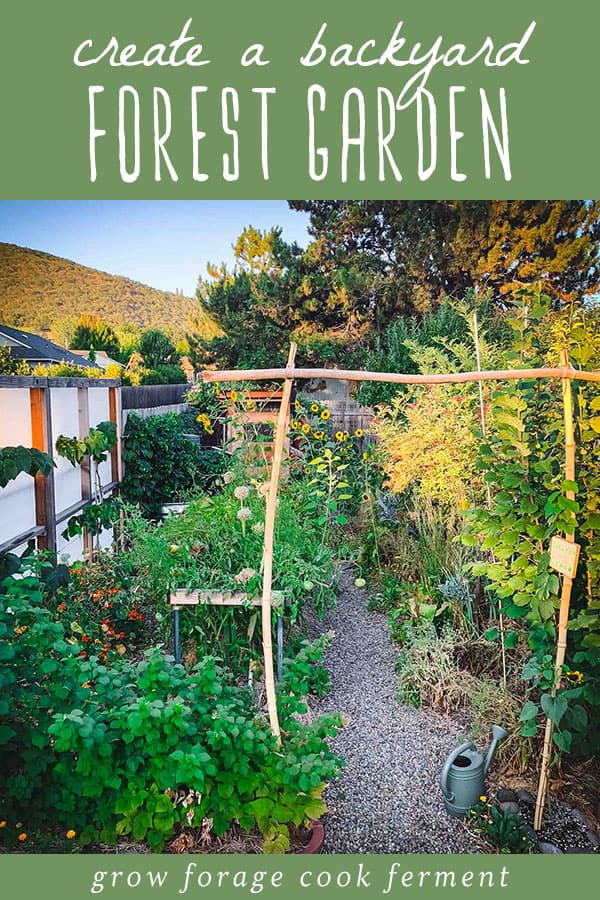
The Backyard Forest Garden eBook
If you want to learn more about forest gardening, check out my ebook: The Backyard Forest Garden: How to Create a Small-Scale Food Forest.
It includes step-by-step instructions on how to design and build a forest garden right in your own backyard!
You’ll also find an extensive list of perennial permaculture food forest plants to consider including trees, shrubs, ground covers, and vines.
What is a Permaculture Forest Garden?
A forest garden, or food forest, is a grouping of intentionally placed plants that are designed to mimic the interrelationships that exist in a natural woodland environment.
Wild trees, shrubs, groundcover, and vines all grow together in a symbiotic fashion that requires no additional fertilizer, water, pest, or disease control other than what the plants provide for themselves.
The plants mutually benefit themselves and the gardener. They provide food, fodder, fertilizer, fun spaces, beneficial insect habitats, and medicine.
For example, a plant whose habit is to grow low and spreading under a tree will shade its root system, retaining moisture. Likewise, the tree can provide a trellis for a vine to clamber up.
Some plants have deep tap roots that mine nutrients from the soil and make them available to those nearby.
Other plants produce blooms that are inviting to beneficial insects for pest control.
Still others fix nitrogen in the soil and act as a fertilizer species, such as fava beans.
This grouping of mutually beneficial plants is about as far from a cornfield as you can imagine!
Food Forest Guilds
In permaculture these small groupings of plants are called guilds. When you put many guilds together you in turn get a forest garden.
One of the best examples of a miniature forest garden, or guild, is what as known as the three sisters.
Corn, beans and squash are planted together in the same mound in this Indigenous American method of food production and cultivation.
The corn grows up to provide shade for the squash and a trellis for the beans.
The beans fix nitrogen and fertilize the corn and squash.
The squash covers the ground and acts as a living mulch for the corn and beans.
All the elements work together, and because of this the plants actually grow better in this guild than they would separately.
Fruit tree guilds are another common way to create a guild. This cherry tree guild is a great example.
Guilds are perfect for getting a forest garden started in your backyard!
Forest Garden Design
To grow a forest garden, you don’t need an area the size of a forest; in fact, a strip of land five feet wide by twenty feet long can hold an enormous amount of food producing plants. Even an eight-foot wide circle can be very productive.
Backyard food forests are very doable!
The trick is in finding a group of plants that all benefit each other to create guilds in these small spaces. There are infinite variations with a basic outline to follow.
For every food producing tree, include one nitrogen fixing shrub or tree. Then add a plant that attracts beneficial insects, another with a deep tap root to act as the nutrient accumulator (such as comfrey), and a ground cover.
This arrangement is a step up from the three sisters, but can go even further. With no constraints on size, a forest garden can be huge.
Picture the tallest trees planted to the north, then moving south, smaller trees with vines growing on them, then herbs and finally some ground cover.
Since the tallest trees are to the north, all elements of the garden are stepped down in size to receive adequate sunlight from the southern sun.
Whether the food forest you are planting is as small as a three sisters guild or so huge that is resembles a wild woodland (you can even add beehives into the mix!), the same principles and elements are applicable on any scale.
Plants to Include in a Food Forest
There are many different plants that can be included in a food forest. Both annuals and perennials work well, but perennials are often preferred.
Here are some common trees, shrubs, groundcovers, and vines for forest gardening:
Trees – apple, cherry, elderberry, plum, pear, paw paw
Shrubs – aronia, blueberry, currant, goji berry, lovage, sea buckthorn
Groundcovers – comfrey, chives, rosemary, sage, strawberry, walking onion
Vines – grape, hops, kiwi, maypop
The Backyard Forest Garden ebook includes an extensive list of permaculture plants to consider for your forest garden!
Learn More About Permaculture Forest Gardening & Food Forests
A great resource on forest gardens, and my favorite book on permaculture is Gaia’s Garden by Toby Hemenway.
There is also the Edible Forest Gardens 2 Volume Set by Dave Jacke and Eric Toensmeier, widely considered the best resource on the subject.
Here are more posts I’ve written about permaculture:
- Permaculture 101: The Basics
- Permaculture 101: Zones
- Tropical Permaculture
- 6 Easy Backyard Permaculture Projects for Beginners
- How to Build a Permaculture Swale Planting Bed
- Gift Guide for Backyard Gardeners and Permaculturists

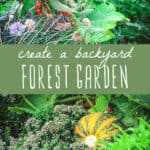
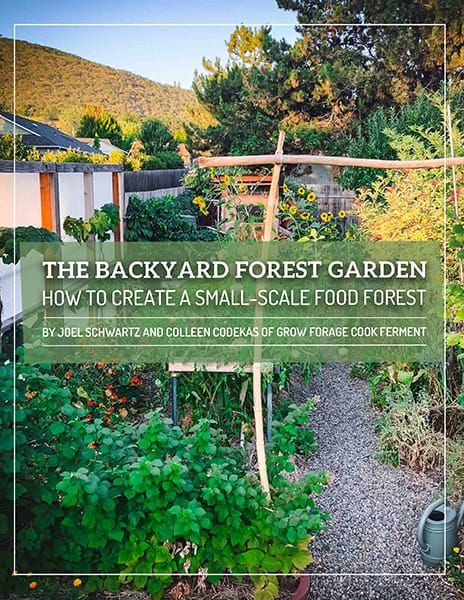
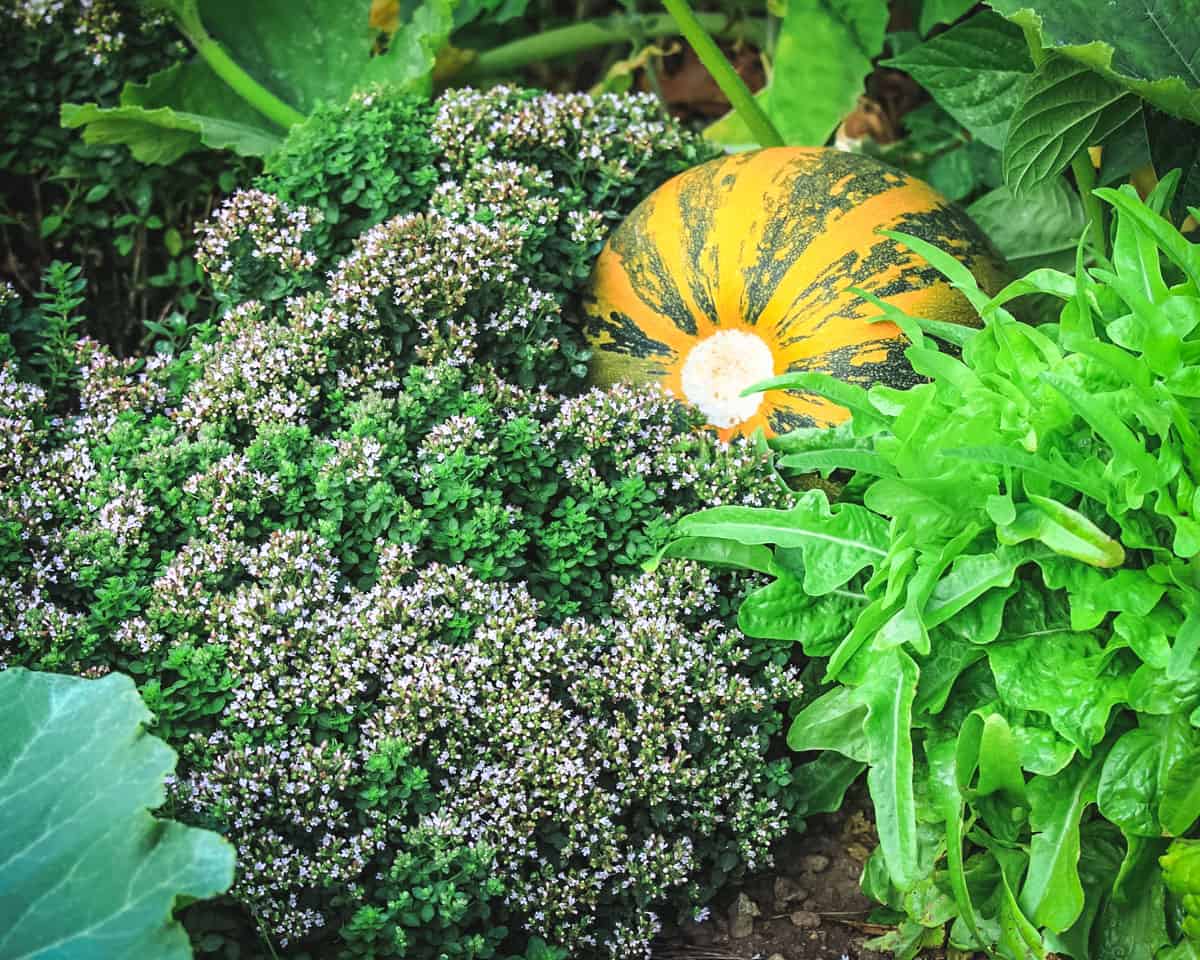
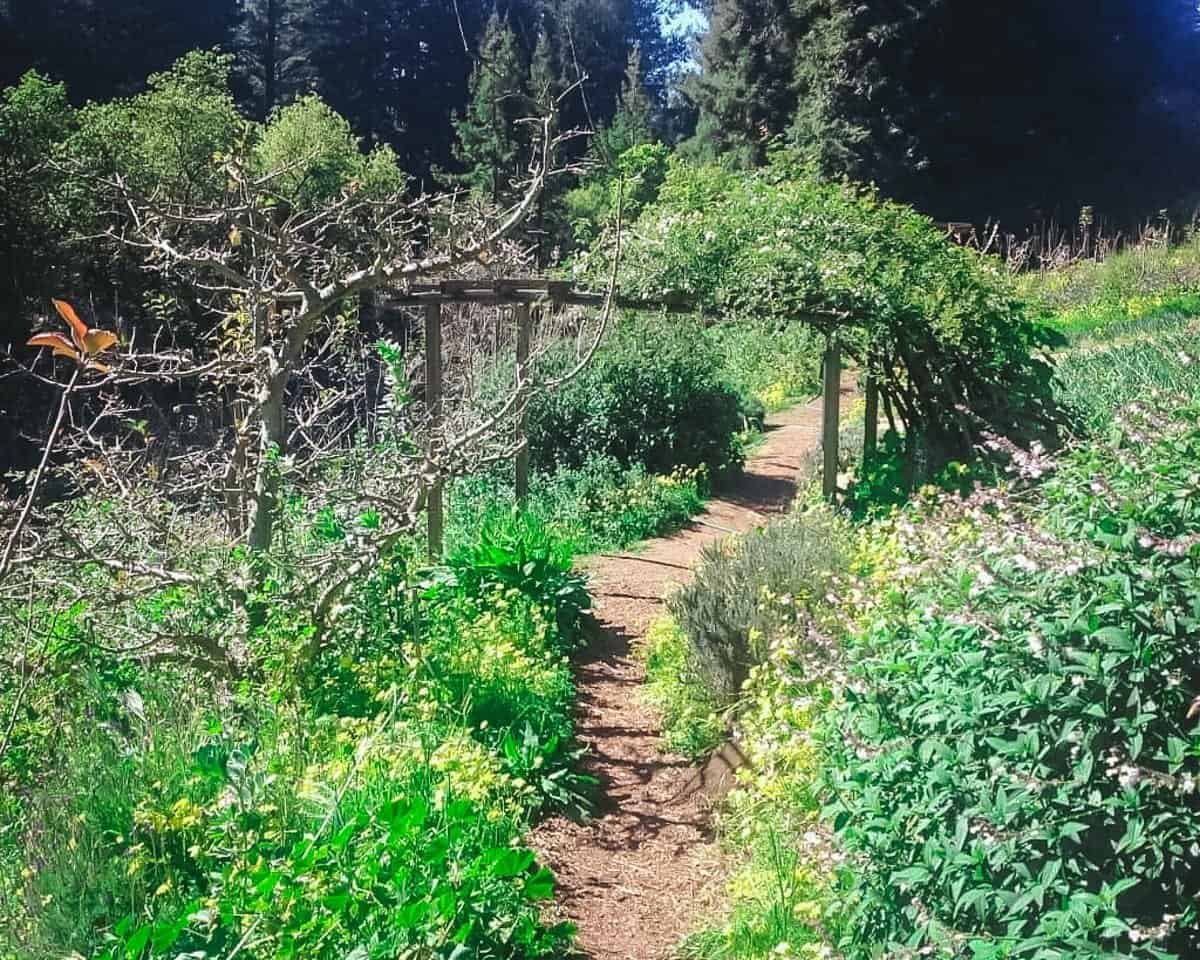
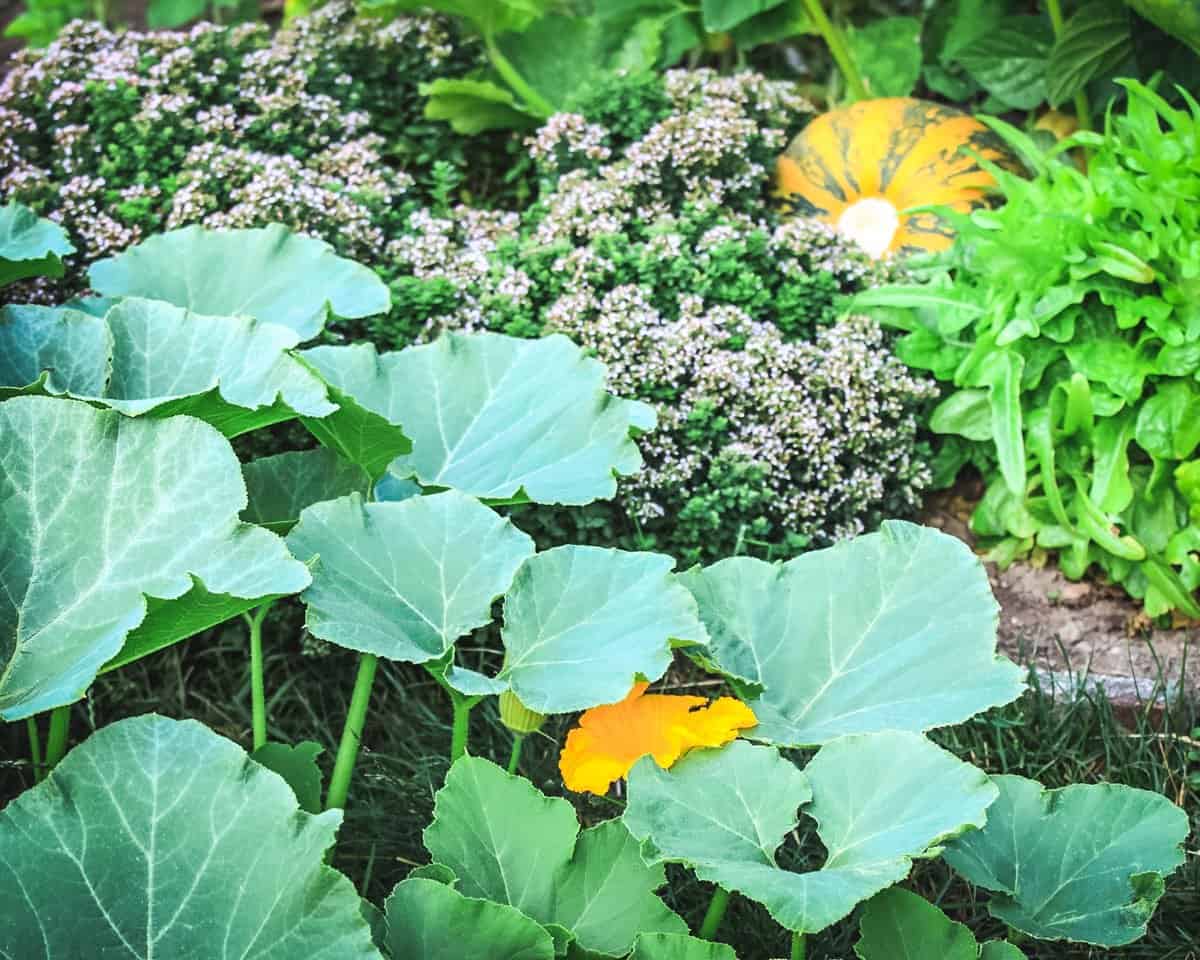
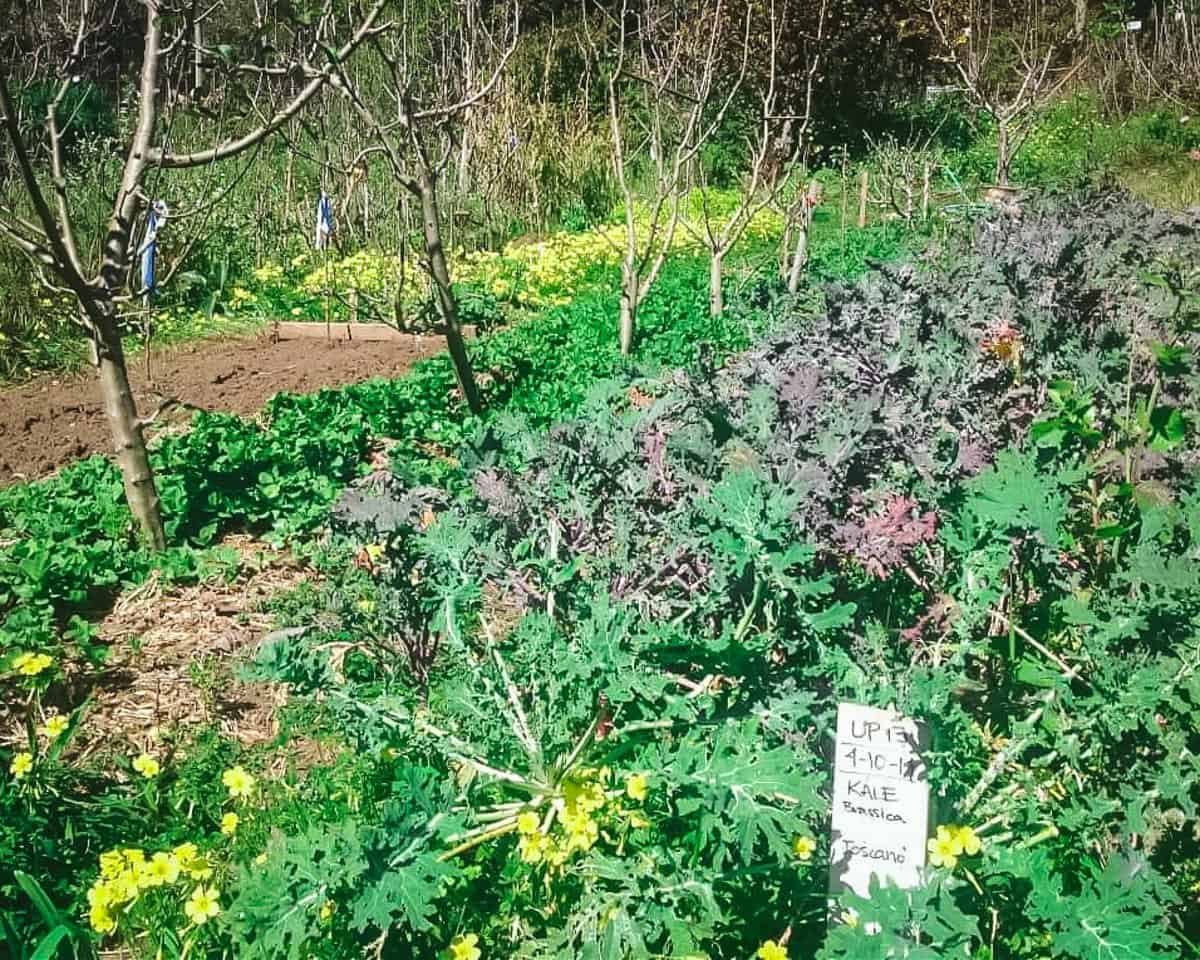
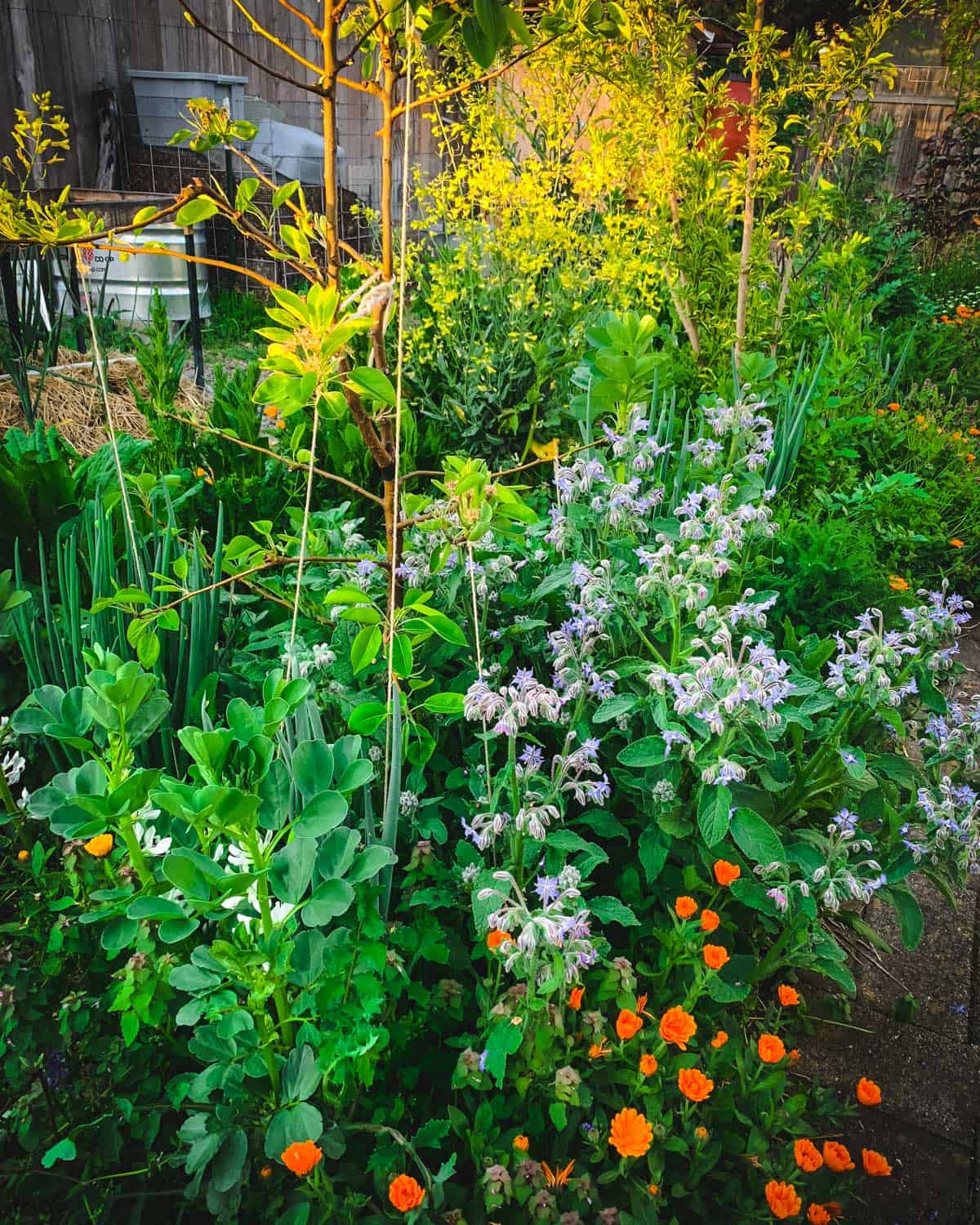
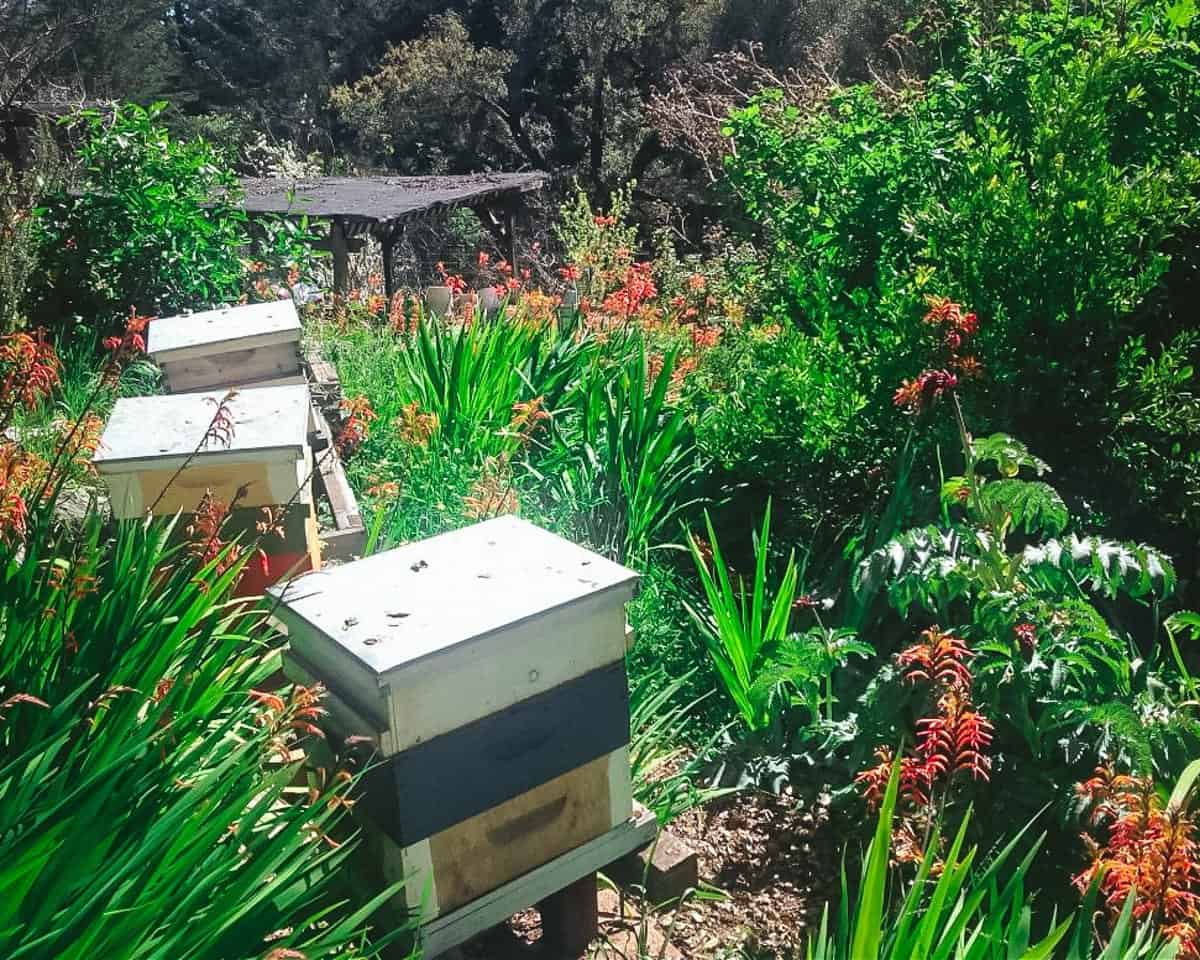
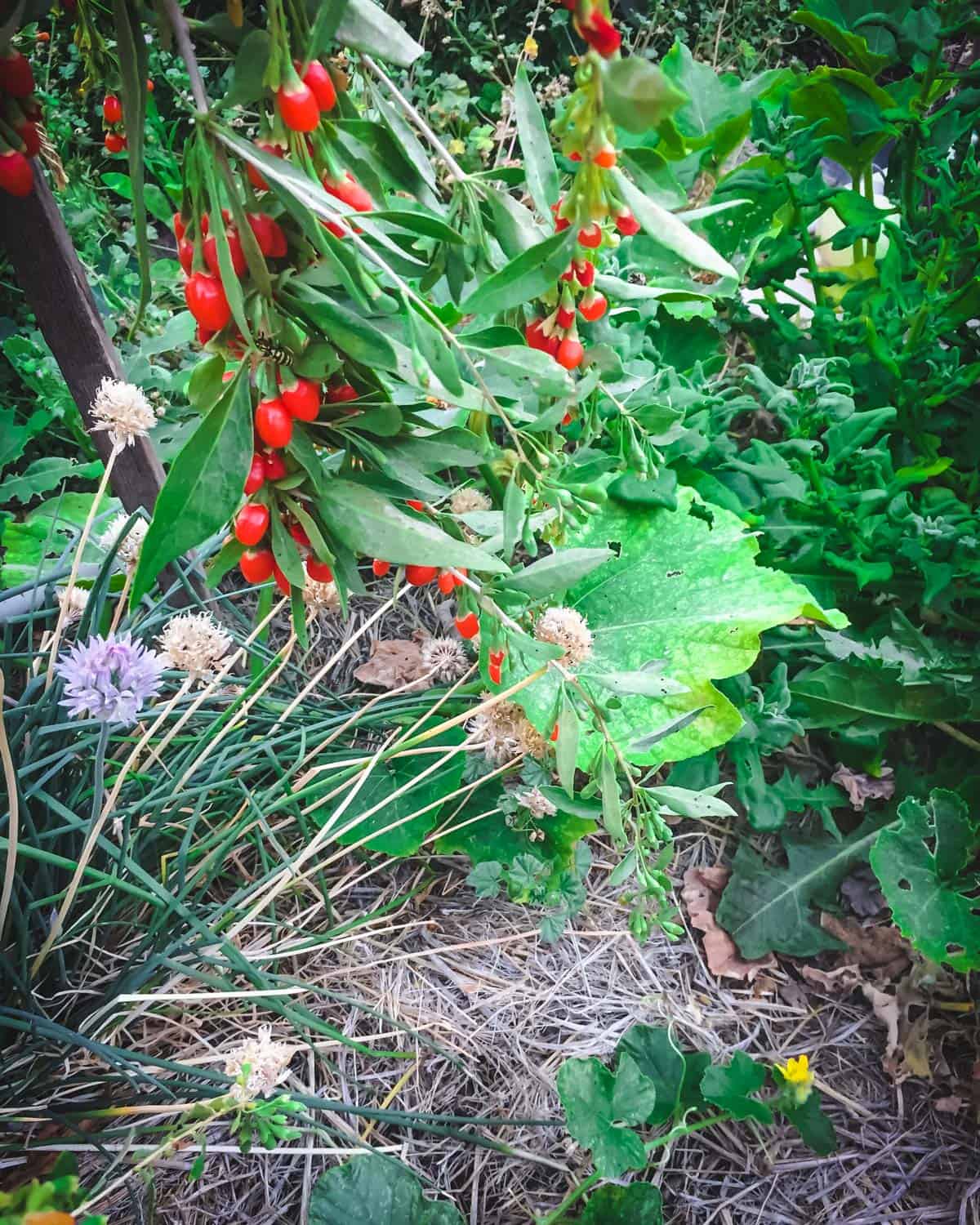

Are there any businesses that help set this up? We live in Ohio, USA
Probably! I would search for a permaculture consultant in your area.
I’ve done some online checking into permaculture and, naturally, it sounds almost perfect. The only issue I have is this: Everything seems oriented to preserving soil structure; I’ve done chop and drop weeding forever; but does this mean root crops are out? How do I reconcile carrots, potatoes and sunchokes with soil structure?
Hi there, roots are definitely part of permaculture gardening and they are very important for the soil. They especially help to break up the soil and they also bring up nutrients to the surface.
I have an 8 acre hobby farm in southern Oregon. I have been wanting to turn it into a food forest. I’m so excited to see what comes of it. Everything I have is organic and I don’t use anything for pests or weed control. My only issue is that we do some poison oak and I’m having the hardest time erradicating it. Any ideas??
Spray it with vinegar
will the vinegar get rid of leftover oils from the plant
Love this! I am also in Australia and am so glad to have happened upon your site, I have signed up to your emails x
Just getting into this idea, and just love it!! I’m in Michigan, are there any resources you recommend for growing with such a small growing season?
I would look up Eliot Coleman’s books, he does permaculture gardening in a cold climate.
Love it, and love Gaia’s Garden etc but I’m in Australia. I’ve yet to find a Food Forest Book specific to subtropical zones in Australia… soon, I’m sure… and any suggestions gratefully received :)
I am not sure which Australian experts have published a book on food forests, but YouTube is replete with permaculture experts based in Australia. If you just search “permaculture Australia” over 77,000 examples pop up. (Morag Gamble is one of my favorites.) “Australian food forest” yields 498,000 results! :) Ironically, I’m in a very different climate, and have been frustrated, sorting through all the gorgeous & jealous-making options available to Aussies! Lucky you!
Beautifully written, Joel!
A wonderful website and I too am from Australia. I was given what I thought at the time,lemon mint but since looking at your guide on Lemon Balm I think it could be it. Can you tell me please the colour of it,s flowers and can I put a photo up so you could tell me please if it is Lemon balm or lemon mint. It has spread hugely as well and has even got in with some of my potted plants too. I am really wanting to try your lemon balm recipes as well! God bless